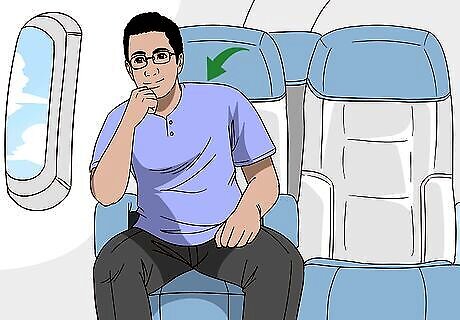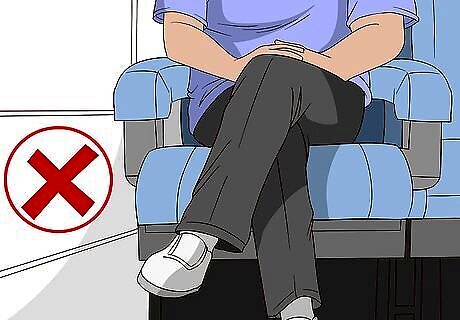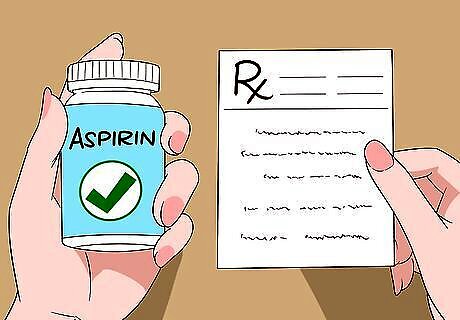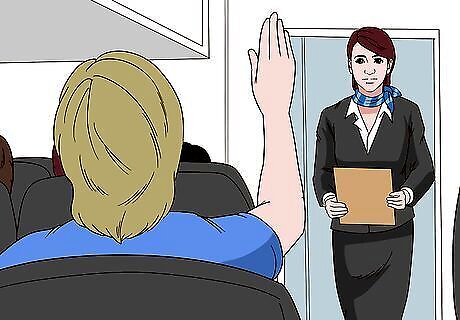
views
Preparing for Your Flight

Wear loose-fitting pants and tops. Sweatpants, loose cotton T-shirts, or sweatshirts are all great for improving blood flow and promoting less swelling. Try to avoid skinny jeans, leggings, or any pants or shirts with a tight waistband. Sweatpants and sweatshirts are also much more comfortable to travel in. You can also change into more comfortable clothes while you’re on the flight.

Put on compression socks or stockings. Compression socks or stockings put gentle pressure on your leg as you wear them to promote blood flow. Put on a pair of class 1 compression stockings or socks, which is the least compressed type, before you get on a flight. You can find compression socks and stockings at most pharmacies. They’re usually knee-high, but some are thigh-high. Try to wear comfortable, soft shoes, like sneakers with compression socks or stockings to promote blood flow.

Drink water to stay hydrated. Drinking water is important before, during, and after your flight so your blood has an easier time flowing through your legs. Keep an empty water bottle with you in your carry-on and then fill it up once you’re past airport security.Tip: Try to stay away from dehydrating liquids, like soda, alcohol, and coffee.

Reduce your salt intake as much as possible. Salt can dehydrate you, even if you’re drinking enough water. Especially try to avoid salty, processed foods like chips, pretzels, and salted nuts before and during your flight. If you are on a medically restricted diet, talk to your doctor before reducing your salt intake.
Promoting Blood Flow During the Flight

Get up and walk around once every hour. Walking can help improve your blood flow and make your feet and ankles less swollen. If you’re able to, walk up and down the aisle of the plane every 60 minutes, or more often.Tip: Consider booking an aisle seat so you don’t have to squeeze past other people every time you get up.

Extend your arms and legs while you’re sitting down. Straighten your legs as far as they can go, then roll and flex your ankles to get your blood moving in your legs. Stretch your arms out in front of you and roll your wrists to get blood flowing in your hands and fingers. You can also flex and stretch your calf muscle to promote blood flow to your ankles and feet. Try massaging your arms and legs while you stretch them to promote blood flow.

Shift your position in your seat as much as possible. Try not to stay sitting in one position for too long, and instead shift from your right hip to your left as much as you can. Try leaning over on one armrest, then the other. This can also help prevent your legs and feet from falling asleep as you sit down. If there’s enough room and you’re flexible, sit back in your seat and try elevating your legs above your heart.

Avoid crossing your legs to promote circulation. Crossing your legs at the ankles or knees can make the blood pool up in your legs. Keep your feet flat on the ground and extend your legs as much as possible while sitting down. Try to fit your carry-on into an overhead bin rather than under the seat in front of you so you have more legroom.

Try not to drink alcohol or take sedatives so you can stay awake. Things that make you sleepy, like alcoholic drinks and sedatives, will make you sit in your seat longer. Try to stay awake so you can shift your position and get up to walk around often. If you are on a super long flight, sleeping may be unavoidable. Try to fall asleep with your legs extended and uncrossed. Alcohol can also dehydrate you, which can discourage blood flow.
When to Seek Medical Care

Consult a doctor if you are at risk for DVT. DVT, or deep vein thrombosis, is when a blood clot forms in the veins of your pelvis area. If you are pregnant, overweight, have recently had a surgery, or you’ve had DVT before, talk to your doctor before going on a flight for longer than 3 hours. Your doctor may be able to prescribe you an anti-inflammatory medication to lower your risk factors.

Talk to your doctor before taking aspirin for swelling. Although aspirin is sometimes marketed as an anti-inflammatory drug, it does sometimes have severe side-effects. Consult your physician about what you can take before a flight to mitigate your swelling. You may be prescribed blood thinners to take before your flight.

Seek emergency services if you experience severe pain. Severe pain or swelling in a single leg could be the sign of a blood clot, which can be fatal. Call emergency services for your area to find out if you need further treatment.Warning: You should also seek medical care if you are having chest pain or shortness of breath.


















Comments
0 comment